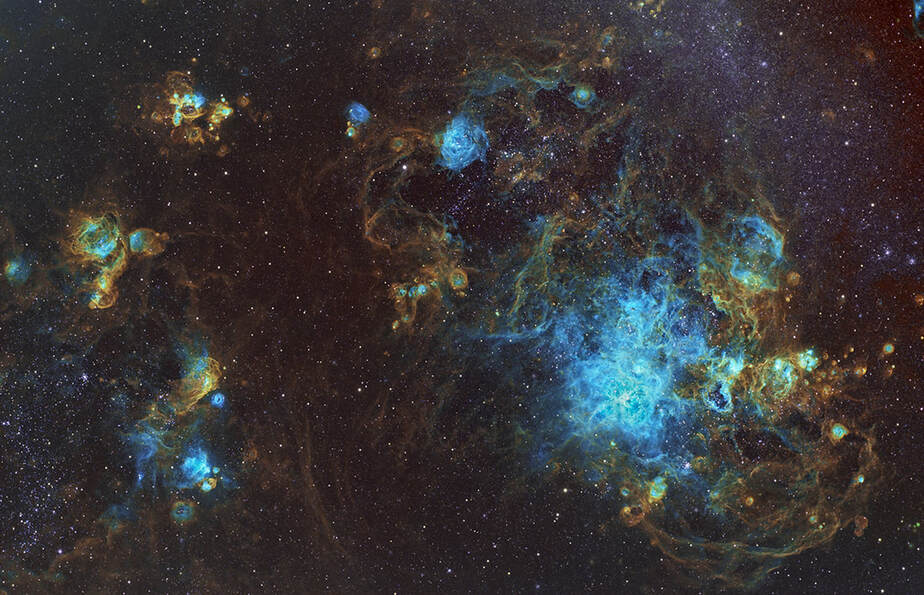The Large Magellanic Cloud
Nubecula Major in Doradus/Mensa
is a satellite galaxy of our own Milky Way. At a distance of 160,000 light-years, the Large Magellanic Cloud (LMC) is the second-closest galaxy to us.
At approx. 32,000 light-years across, this is but a small section, which is densely packed with star forming regions.
At right is the well known Tarantula Nebula. The LMC is believed to have been a barred dwarf spiral galaxy before its spiral arms were disrupted
by tidal interactions with the Small Magellanic Cloud (SMC) and the Milky Way's gravity.
This is a starless narrowband image, comprised of SHO (Sulfur II-Hydrogen alpha-Oxygen III) data mapped to the so-called Hubble Palette.
Many thanks to my student, Emilio Castillo Aravena, who acquired this fine data from Chile's Atacama Desert.
The Milky Way and the LMC are predicted to merge in approximately 2.4 billion years. See you then!
LARGE
is a satellite galaxy of our own Milky Way. At a distance of 160,000 light-years, the Large Magellanic Cloud (LMC) is the second-closest galaxy to us.
At approx. 32,000 light-years across, this is but a small section, which is densely packed with star forming regions.
At right is the well known Tarantula Nebula. The LMC is believed to have been a barred dwarf spiral galaxy before its spiral arms were disrupted
by tidal interactions with the Small Magellanic Cloud (SMC) and the Milky Way's gravity.
This is a starless narrowband image, comprised of SHO (Sulfur II-Hydrogen alpha-Oxygen III) data mapped to the so-called Hubble Palette.
Many thanks to my student, Emilio Castillo Aravena, who acquired this fine data from Chile's Atacama Desert.
The Milky Way and the LMC are predicted to merge in approximately 2.4 billion years. See you then!
LARGE
